Ready to lose weight and feel great?
Please call or text 24/7 for a FREE CONSULTATION at (844)268-8482
Ready to lose weight and feel great?
Please call or text 24/7 for a FREE CONSULTATION at (844)268-8482
A common question throughout this new lifestyle process refers to Net Carbs. “What are Net Carbs? How do I determine the amount of them? Why should I be aware of them?” All of these questions are extremely important within a healthy lifestyle.
Net Carbohydrates are the carbs in your diet that can be absorbed and used for energy. They are the total carbohydrates minus fiber and sugar alcohols, this gives you the total net carbohydrates found within that food. Fibers and sugar alcohol pass through your digestion without breaking down so your body doesn’t utilize them.
Net carbs are the amount of grams of carbohydrates that impact your blood sugar level. The less a food interferes with your blood sugar level the less likely it is to interfere with your weight loss. Therefore it is important to be aware of how what you eat reacts within your body. Fiber is a carbohydrate from plants that humans can’t process. Sugar alcohol has a different molecular structure from that of sugar molecules. This leaves them partially or completely indigestible by humans.
Carbs are ok but only in moderation. Carbs in moderations are actually promoted but excess carbs can cause harm. They can spike your blood sugar, cause inflammation, trigger and enhance food cravings, disrupt hormones, mess with gut micro biome (bacteria), contribute to obesity, weight gain, metabolic syndrome, diabetes, and more.
Calculating your Net carbs is an important skill to acquire in a healthy diet. You can determine the number of grams of Net Carbs with the information provided on the nutrition label provided on your food. You can also google food labels for food that is not provided with one, such as fruits and vegetables
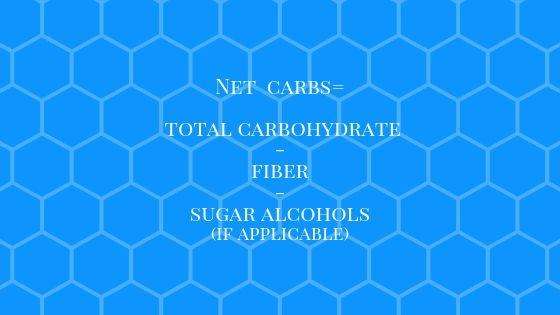
Therefore it is important to understand counting net carbs and the reasoning behind it. It will help you with weight loss, weight control, and education on the healthier lifestyle. It’s important to have control over the amount of net carbs you consume in one day. It’s important to be aware of how much your body needs and if you are going over that or not. It’s also a necessity to be educated on why certain topics in a healthy lifestyle are important. Hopefully understanding what Net Carbs are, how to count them, and why will help with getting, maintaining, and keeping a healthier lifestyle.
Sugar carries a bad rep. But why? Why is it warned against? Why should you avoid it? The way that sweets impact the body is way more complex than only weight gain. Hopefully this article will bring some light to this topic and help people understand what EXACTLY sugar does that is so negative for the human body.
When a large amount of sugar is ingested almost every part of your body is impacted and feels the stress. Parts of your body such as your brain, liver, kidneys, pancreas, skin, heart, mouth, and more feel the affects! UC San Francisco conducted a study that discovered that drinking sugary drinks such as soda can age your body on a cellular level as quickly as cigarettes.
Your mouth is directly affected by ingesting sugar because it becomes a feeding ground for bacteria. Bacteria, such as Streptococcus mutans, eat the leftover sugar in your mouth. The bacteria ferments it into lactic acid, which dissolves the minerals in your teeth enamel. This is why your dentist might also be telling you to avoid sugar!
Sugar causes the brain to release dopamine and opioids which feel-good chemicals. Theses are the same chemicals that are released when using certain drugs. After this initial “high”, much like after drug use, your body craves more. Rats on high-sugar diets behave like drug addicts. Your brains response to sugar is the same as its response to cocaine.
The pancreas releases insulin once the blood sugar levels rise. Insulin absorbs the excess glucose in the blood to help lower the sugar levels back down. After the insulin secretion and your blood levels drop you typically experience a sugar crash. The blood sugar spiking is typically referred to as a sugar rush; the insulin lowering the blood sugar is the following sugar crash. After these events you typically feel mentally and physically drained.
Your liver also functions to regulate blood sugar levels. Your cells use the sugar in your blood (glucose) as energy. Your liver stores the excess glucose in the form of glycogen. This a good form of back up energy but your liver can only store so much. The excess storage builds up as fat in the liver. This can lead to a nonalcoholic fatty liver disease. Nonalcoholic fatty liver disease is when your body contains more fat than it can metabolize. Although with this disease-sugar isn’t the only cause but storage of sugar in the liver is a large reason. If this disease progresses it can eventually lead to liver failure in the future.
If you have blood with high sugar levels it can also damage almost every other organ as it travels through your entire body. The small blood vessels carrying blood with high sugar levels will eventually get tired. Areas in your body relying on small blood vessels to carry blood to them (kidneys, brain, heart, eyes) become affected. High insulin levels in the blood can cause the smooth muscle cells around the artery walls in your heart to grow faster which raises blood pressure. This can eventually lead to heart disease.
Sugar also affects your skin. Glucose and fructose attach to proteins such as collagen and elastin making it harder for these proteins to repair themselves. This process of glucose attaching itself is referred to as glycation, which results in wrinkles and other signs of aging.
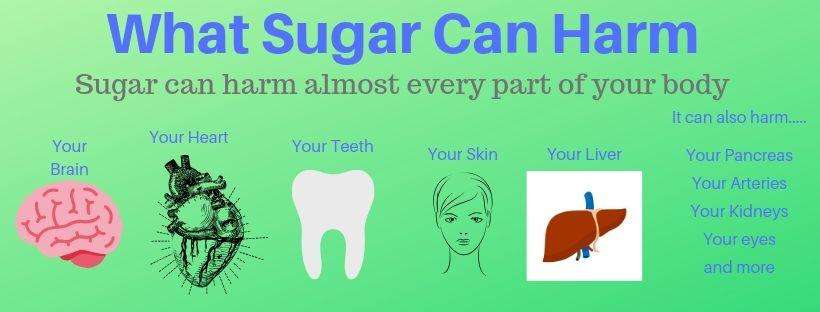
Overall there are hundreds of reasons to avoid sugar. You have probably been warned about sugar before but it is always important to know the different harms it can cause to your body. Maybe rethink those sugary drinks? It’s amazing to learn about the harms that something in your everyday life and diet can cause you. There is no “right” amount of sugar that you should be ingesting. It is difficult to cut back on sugar completely but it is never too late to start. Added sugar can be found in so many foods that you’re unaware of. Start with reading the nutrition labels and make yourself aware of what you are doing to your body. Take care of your body and it will take care of you!
Labor day weekend is usually filled with BBQ’s, cookouts, pool parties, beach days, and other fun activities. It is typically hard to eat healthy and make wise decisions with a lot of activities taking place. Here are some recipes for eating healthy!
These are delicious for a cookout and super easy to make. It’s easiest to prepare them the night before or before the cookout starts- then the kebabs are ready to go whenever they are needed! I let mine marinade over night but it is also ok to let them marinade for about 2 hours. There will still be a nice fresh flavor! This recipe yields 6 servings. It takes about 20 minutes preparation time, and 10 minutes cooking time!
Nutrition Facts: Per Skewer; 243 calories; 6g fat; 8g carbohydrates; 36g protein; 1g fiber
You will need:
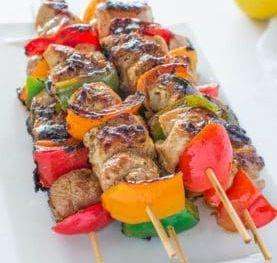
Directions:
1. Whisk the olive oil, lemon juice, vinegar, garlic, cumin, thyme, oregano, salt and peppers together in a large glass bowl. Add the chicken and toss, making sure each piece is coated evenly. Cover the bowl with plastic wrap, allow to marinate in the refrigerator for at least 2 hours.
2. Preheat an outdoor grill for medium-high heat. Oil the grate lightly. If grilling isn’t desired- preheat oven to 425 degrees Fahrenheit.
3. 30 minutes before cooking, soak the wood skewers in water.
4. Remove the chicken from the marinade and shake off the excess liquid. Discard the remaining marinade. Alternate pieces of marinated chicken, bell peppers, onions, and mushrooms onto the skewers.
5. Cook the skewers on the grill turning frequently until nicely browned on all sides and until the chicken is not longer pink in the center, about 10 minutes.
**If cooking in the oven cook the skewers for about 20 minutes, turn and cook for 5 more minutes or until the chicken reached an internal temperature of 165 degrees Fahrenheit.
Hopefully this turns out as yummy and easy as it did for me! It is extremely juicing when cooking it on the grill and the vegetables go so well with the marinade. Enjoy!
Every kebob needs a side dish! These balsamic grilled zucchini are to die for! They are extremely easy to make and to love. Make these with the kebabs and you will not be disappointed!
Nutrition Facts: 4 serving made; facts are per serving. 32 calories; 2g fat; 2g carbohydrates; 0.2g protein; 0.2g fiber
You will need:
Directions:
1. Preheat grill to medium-low heat and oil the grate lightly.
2. Brush zucchini quarters with olive oil, sprinkle garlic powder, Italian seasoning, and salt.
3. Cook on preheated grill until beginning to brown (3-4 minutes) per side. Brush balsamic vinegar over the zucchini; continue to cook for 1 minute. Serve immediately.
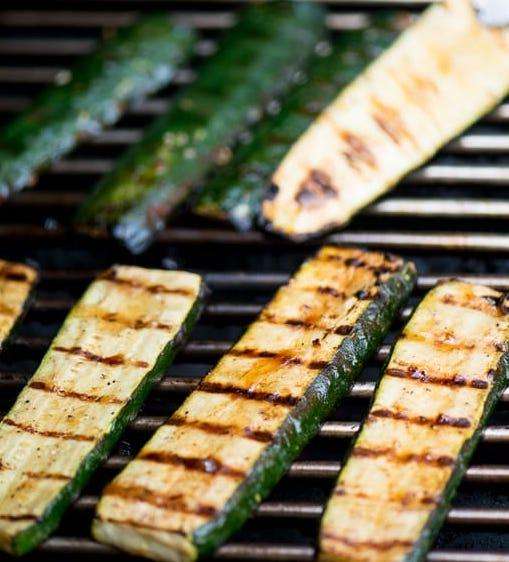
Protein is a very crucial component of a healthy diet or lifestyle. Protein is vital and present within every cell in the body. There are so many benefits to eating protein that many people are completely unaware of. The body uses protein to repair tissues, make enzymes and hormones, and build tissues. It makes up hair and nails. Protein is also a building block for bones, muscles, cartilage, skin, and blood.Protein is also important when it comes to growth and development in children, teens, and pregnant women.
Protein is a macronutrient, which means that the body usually needs to intake a large amount of it. The body does not store protein like it does with carbohydrates and fats. It is important to recognize that even though eating protein is recommended, it is only healthy for humans to eat a modestly regulated amount. It is also important to choose protein sources wisely. Protein also helps to curb hunger by making people feel full longer.
Protein is available in many different types of foods. Consuming large amounts of processed meats means that there is protein in the diet but processed meats are also not healthy options when consumed in large quantities. Instead try foods such as fish, chicken, or nuts. Fish offers benefits such as heart-healthy omega-3 fatty acids and less fat than meat. Chicken is not high in saturated fat if the skin is removed, making this a healthier option. Nuts are highly packed with protein; there are 6 grams of protein in one ounce of almonds. These are all great options to include in a healthy diet, but mindfully.
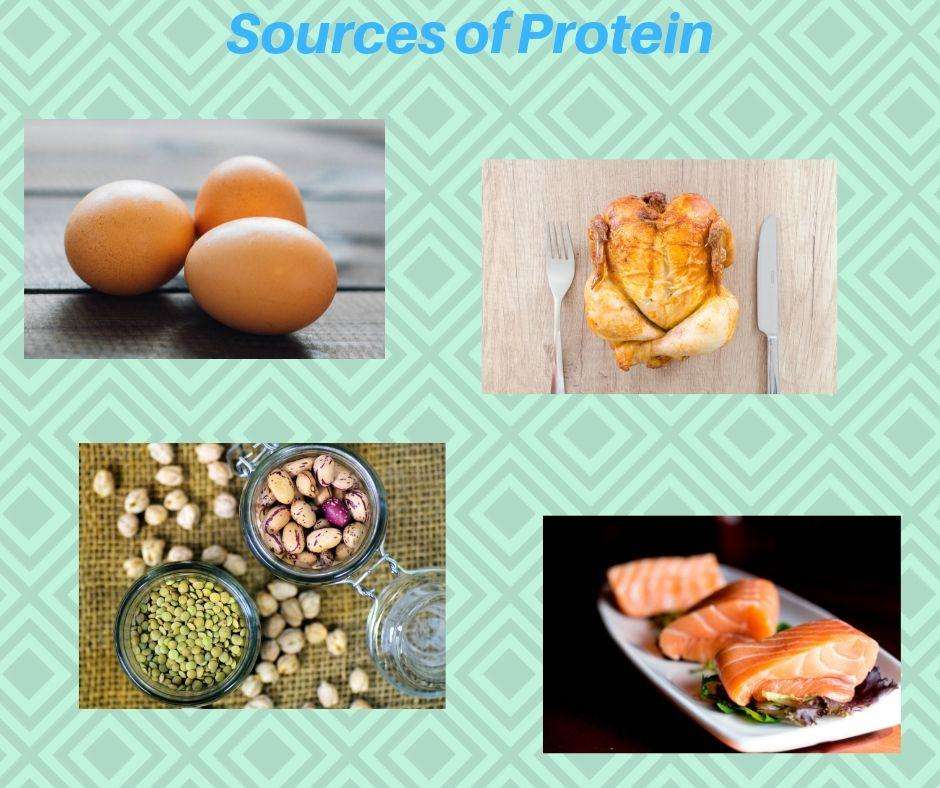
Therefore, it is important to have some sources of protein in order to achieve a healthy diet.It is also important to be mindful of the source of protein, portion of protein, and what else is being consumed with it. It is extremely beneficial to every component of the human body and it can also be delicious!
Metabolism is the chemical processes that occur within a living organism in order to maintain life. It is a very common word when it comes to the topic of nutrition, health, and weight loss. The metabolism is a system made up of two types of processes; turning what we eat and drink into energy, and using that energy to keep us surviving through vital functions such as breathing, circulation, digestion, and movement.
The metabolism relates to food but there is a lot more to it. Metabolism is affected by multiple circumstances while we age. Steps should be taken to improve the metabolism for a healthier life.
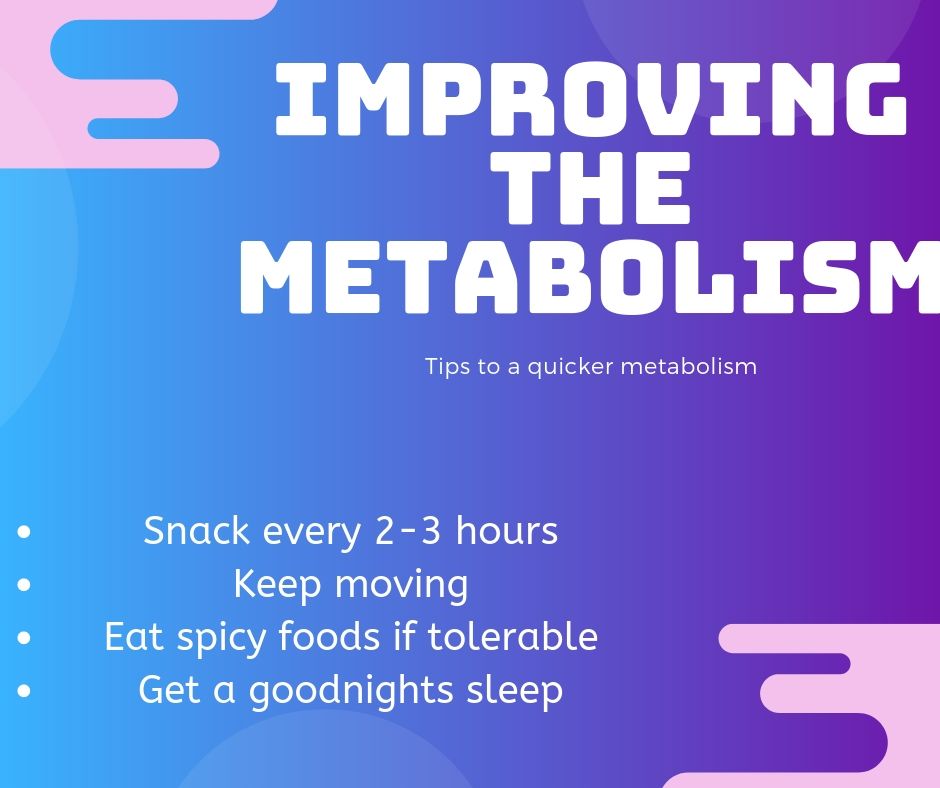
Below are some things to practice that will help maintain or improve the metabolism
Snack and don’t skip. Snacking is a great way to improve the metabolism. The right snacks can keep the metabolism running smoothly and efficiently. These snacks are important to have every 2 to 3 hours. They should most definitely include fiber. Snacking is better than skipping meals because it helps the body from feeling exhausted. It makes it easier to lose weight.
Keep moving, exercising helps to burn fat, build muscle, and keep the metabolism regulated. If your job requires sitting down to much, stand up. Sitting down too much is not healthy. Long periods of sitting can burn fewer calories and lead to weight gain.
It may sound weird but eating spicy foods can help to boost the metabolism. Peppers contain capsaicin, a substance that can boost the metabolism. It may be intolerable for some people but eating peppers at an acceptable amount is supposed to burn an additional 10 calories per meal. It does not account for a large portion of weight loss but helps to boost metabolism for an overall healthier lifestyle.
Getting good nights sleep is also important for improving the metabolism. Sleep deprivation negatively impacts the metabolism. Lack of sleep has also been related to increased blood sugar levels and insulin resistance. It also can boost the hunger hormone and suppress the fullness hormone. Lack of sleep decreases the amount of calories burnt, changes the way the body processes sugar and disrupts appetite-regulating hormones.
Improving the metabolism is easier than it seems and those same healthy habits help with weight loss and meeting nutrition goals. Making small lifestyle changes and incorporating these tips into the routine can drastically increase the metabolism. Improving the metabolism can help lose weight and keep it off.
Most people and clients switch their lifestyle with the intention of losing weight. What they do not realize is the other benefits that are gained with eating healthy. Certain foods and meals are believed to help boost the immune system and give it certain nutrients to make it temporarily work better! A lot of these foods are included in the lifestyle that we teach.
Citrus fruits are bountiful in vitamin C. Vitamin C is believed to be helpful by increasing the production of white blood cells. White blood cells are key fighting components in the immune system against infections. These fruits include grapefruit, oranges, tangerines, lemons, and limes. The body does not produce or store Vitamin C, so daily intake is recommended.
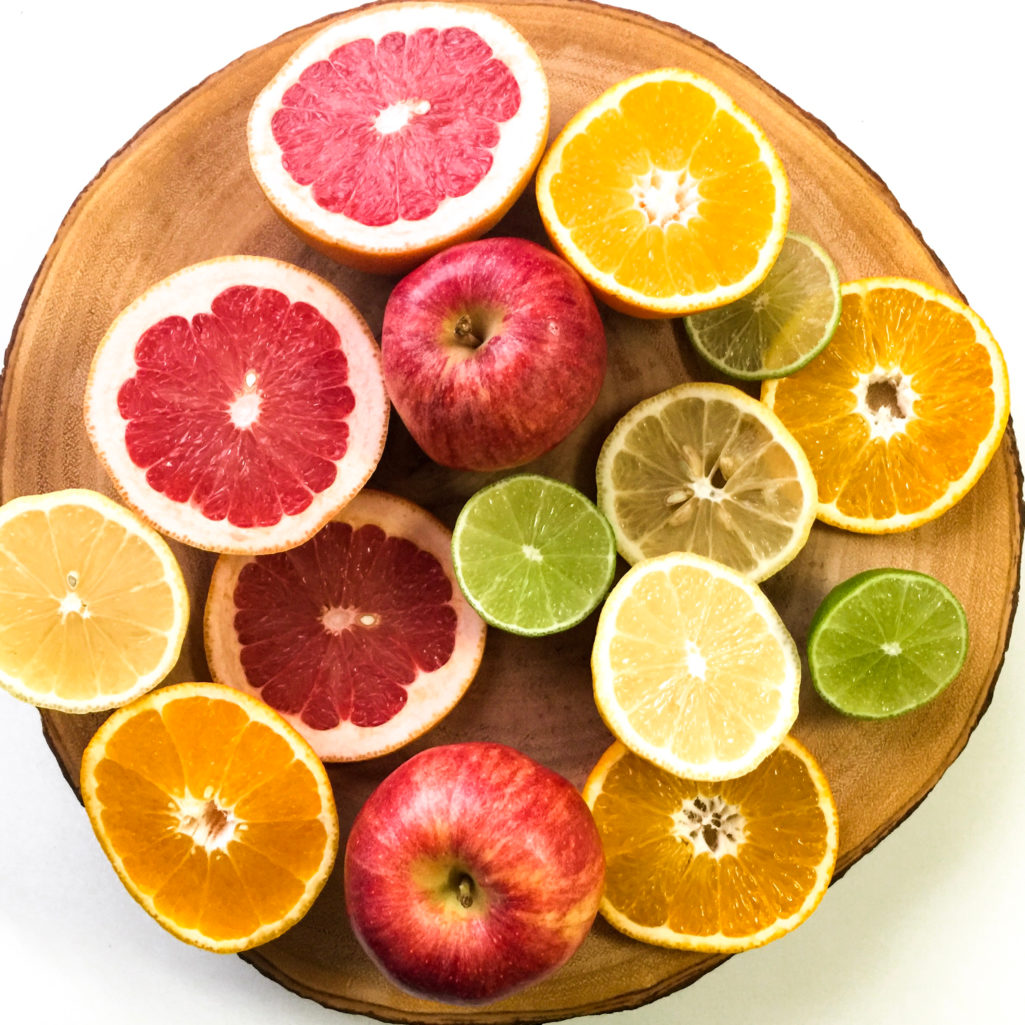
Red bell peppers contain double the amount of vitamin C as citrus. So they provide double the vitamin C health benefits in comparison to citrus. They also contain beta carotene, which helps to keep the eyes and skin healthy.
Almonds tend to be known as an extremely powerful nut. They are packed with vitamin E, which is a fat-soluble vitamin, which means that it is absorbed into fat. Vitamin E is important to the immune system and often over looked because of vitamin C.
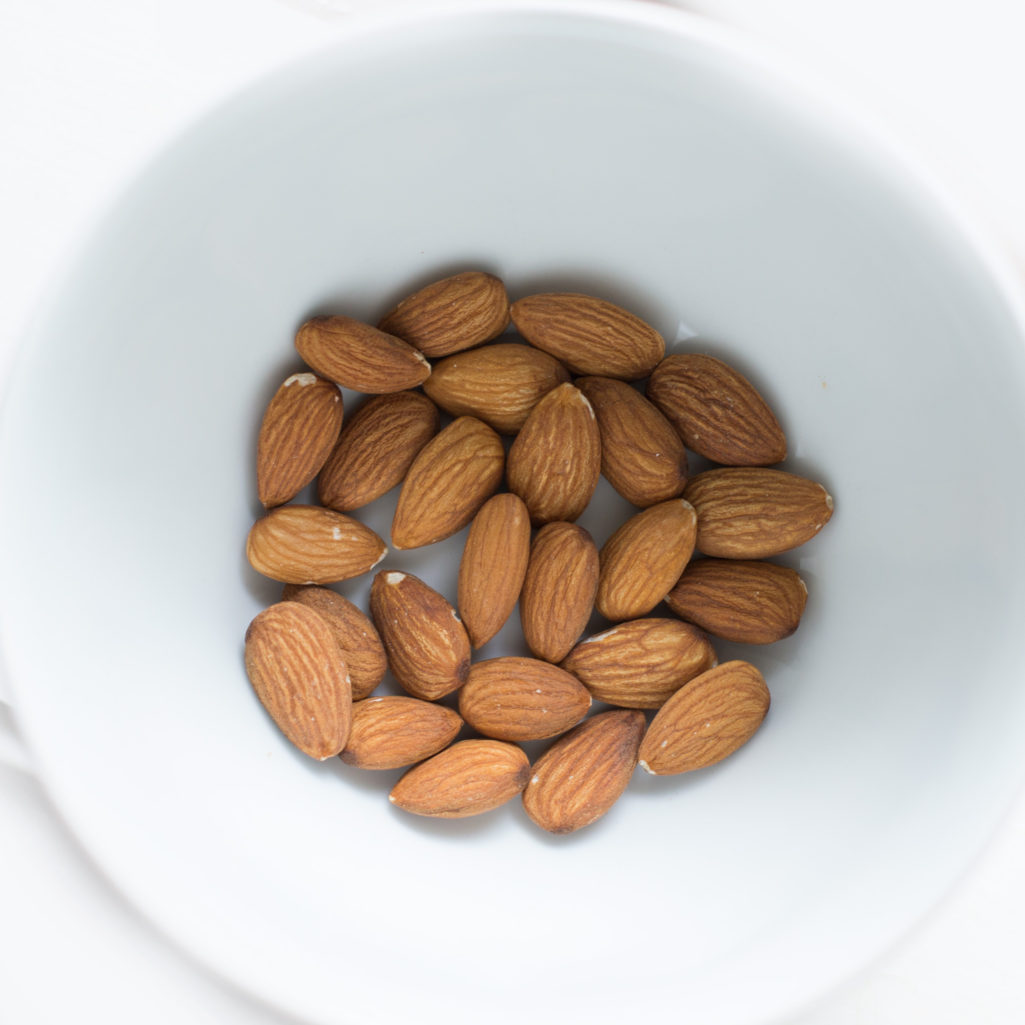
Garlic has been used to help fight infections, sickness, and even vampires. It is used in a lot of recipes and different cuisine around the world. It can possibly help to lower blood pressure. Garlic contains the compound called allicin, which it attributes a lot of its immune boosting power to.
Ginger may help to decrease inflammation, which helps to combat a lot of inflammatory diseases. It can be hidden in many foods because some people do not like the bitter taste. It can help to decrease chronic pain. It is also believed to help lower cholesterol.
Broccoli is packed with vitamins and minerals. It has vitamin A, C, and E. It also has many other antioxidants and fiber. Broccoli has been mentioned in a lot of previous posts because it is helpful for SO many different components of the body. It’s the most healthful when it is raw or cooked as little as possible!

One food that people usually guess thanks to the cartoon character named Popeye is spinach! It is rich in vitamin C, packed with antioxidants, beta carotene, and more! It is close to broccoli because it is the healthiest when cooked as little as possible. When cooked lightly though, it enhances the vitamin A and allows for other nutrients to be released. It is helpful to increase the infection-fighting ability of the immune system.
Turmeric is a food that has been used more recently to help boost health. It has been used for decades as an anti-inflammatory. It is high in curcumin which is thought to help decrease exercise-induced muscle damage.
Other foods that offer immune boosting capabilities is shellfish, poultry, kiwi, green tea, and even sunflower seeds. Proper nutrition is important for the body to run at its best health. Varieties of foods within the diet are important to make sure there is a intake of different nutrients, minerals, and vitamins! It is also important to remember that when eating these foods- to do so in proper portions and never to over indulge. Over indulgence counter acts the health benefits!
Realizing poor habits or even good habits helps us to understand our lifestyle patterns, needs, and changes that are necessary. In retrospect to weight loss, keeping a food journal helps to indicate good and bad eating habits. It also helps with understanding habits while eating; such as watching TV, driving, after exercise, or other activities. These habits can identify if mindless eating is a problem as well.(If you are unfamiliar with Mindful eating refer back to our second blog Mindful Eating and Eating Decisions.) Identifying problems or positive actions helps to determine the right course of action to make healthy changes.
There are so many ways to keep a food journal-it’s something that can be modified for different lifestyles or health reasons. It can help to identify unhealthy eating habits, sugar intake, emotional eating, water intake, nutritional deficiencies, and more! The outcome of the food journal depends on how honest, detailed, and accurate the logging is! Attempting to keep a journal of everything, everyday can be overwhelming. So it is best to break it down; write down what you eat on three weekdays and 1 weekend day. If it is easy to do each day, then go for it!
It is important not to cheat yourself with the exercise. Write everything down, even if it does not seem like much as soon as you consume it. Do not try to rely on your memory and tell the truth in the journal! Review it each day or every couple of days to help increase your own awareness about your self. This is an important step, recording is a process but reviewing is the lesson! There are scientific studies that prove keeping a food journal is beneficial to weight loss and a healthy lifestyle.
Below is an example of a filled out food journal page, they can be altered or changed to fit any lifestyle. There is also a blank page to print and try at home! Enjoy!
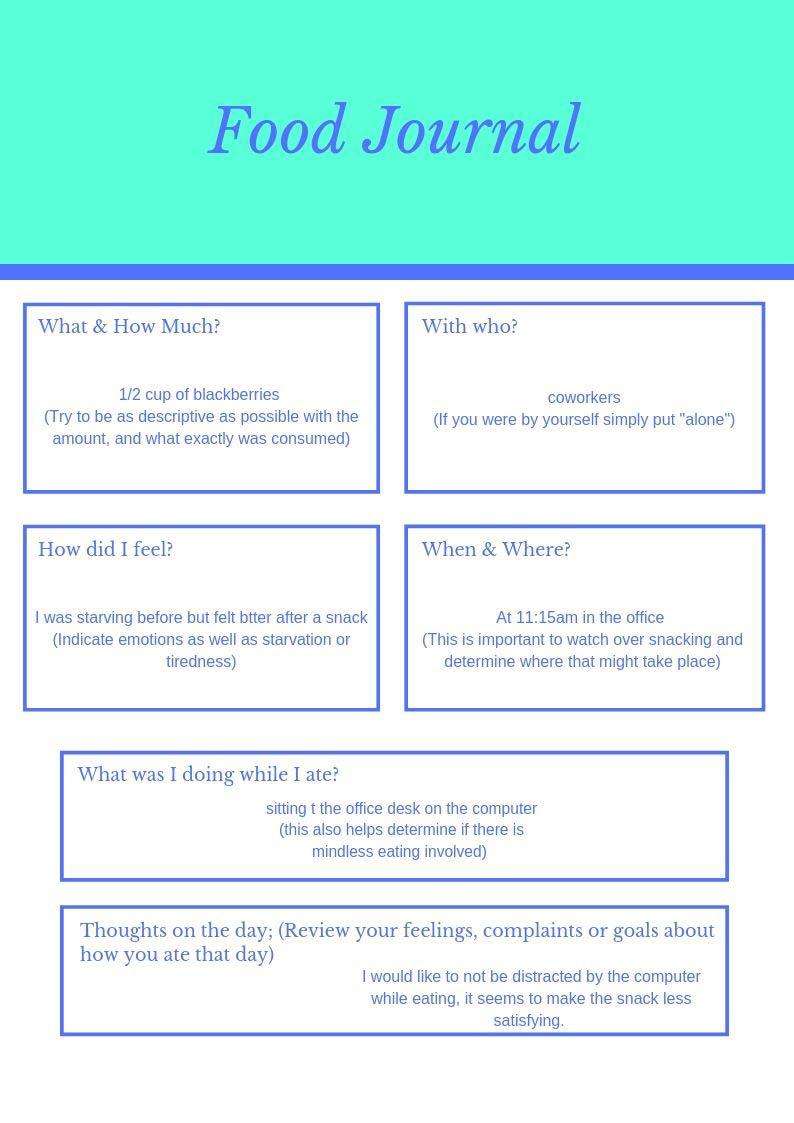
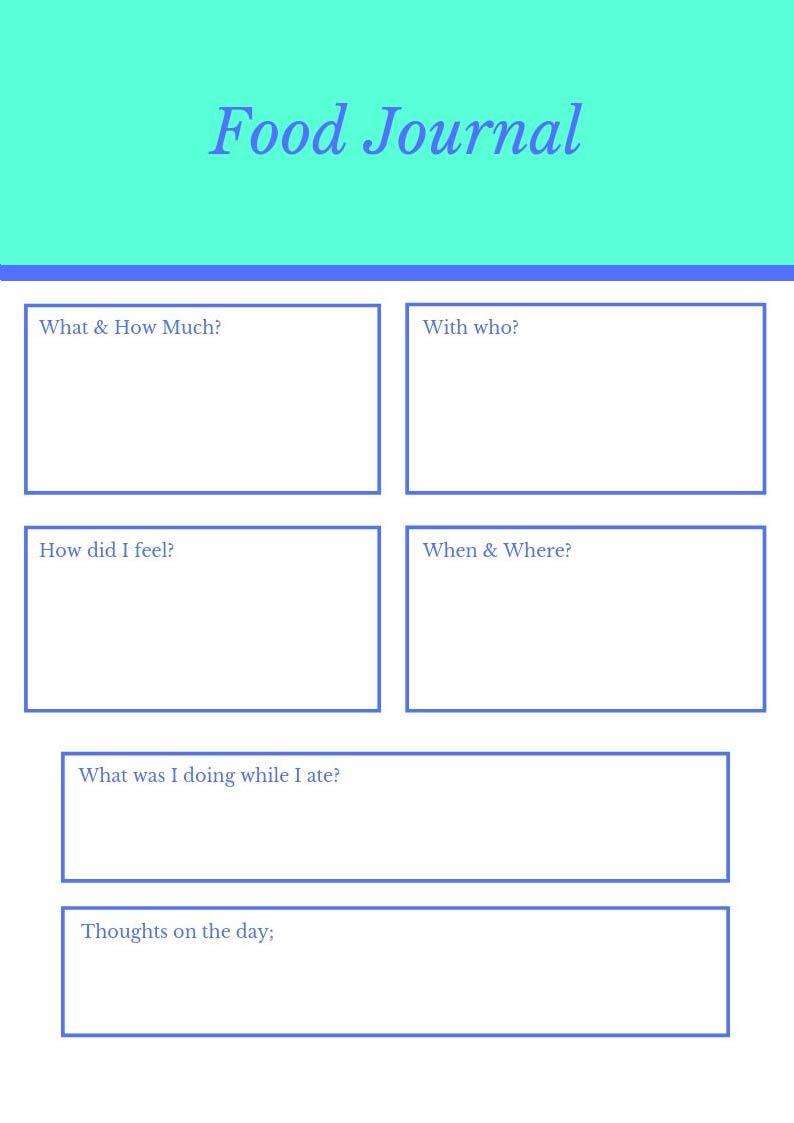
There are hundreds of printable templates available for at home food diaries online. There are also apps such as MyFitnessPal, Spark, and others that can be downloaded to your smart phone to keep a log. If you are struggling with weight loss, lifestyle changes, emotional eating, mindful eating, or if you’re just curious about your eating habits then give the journal a try! It could be extremely revealing!
These guys are one of my FAVORITE foods to cook with, and they usually taste even better to in the fall. I believe that I have turned it into a comfort food of mine. It is a go to for sides almost every night. So I decided to do some research on Brussels sprouts and found some interesting things-along with great recipes.
Brussels sprouts can be roasted to have crispy bits and pieces or even sliced and tossed like a salad! There are so many options and combinations that they provide! Not only do they provide a lot of variety of recipes but also they are extremely healthy. They are closely related to kale, cauliflower, and mustard greens, which are also healthy food choices.
The sprouts contain high levels of folic acid, fiber, vitamins A, K, and C, and are believed to help protect against colon and stomach cancer. One cup of Brussels sprouts has only 28 calories. If Brussels are steam cooked, it is believed that the cholesterol lowering capability is enhanced. Brussels sprouts also contain vitamin B6, potassium, iron, thiamine, magnesium, and phosphorus. They are rich in antioxidants such as kaempferol. Sprouts also help to maintain healthy blood sugar levels. The fiber in Brussels helps to regulate the blood sugar. They are one of the best plant sources of omega-3 fatty acids.
Overall Brussels sprouts are great to have in a healthy diet or lifestyle. They provide a lot of nutrients, antioxidants, and minerals that are needed. They are also extremely tasteful and versatile to different cooking styles. Below are some recipes for Brussels sprouts.
Brussels sprouts salad
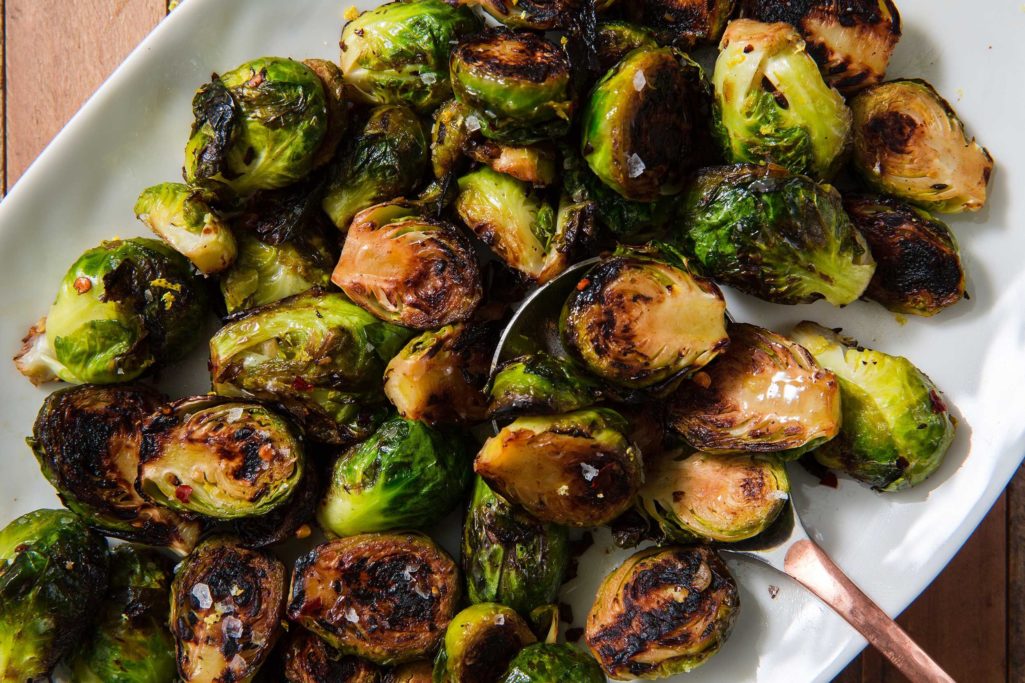
Roasted Brussels sprouts
One of the BIGGEST misunderstandings when it comes to weight loss is that it will not happen unless you exercise.
Why wait for your consultation with our weight loss doctors and nutrition coaches? It's free!